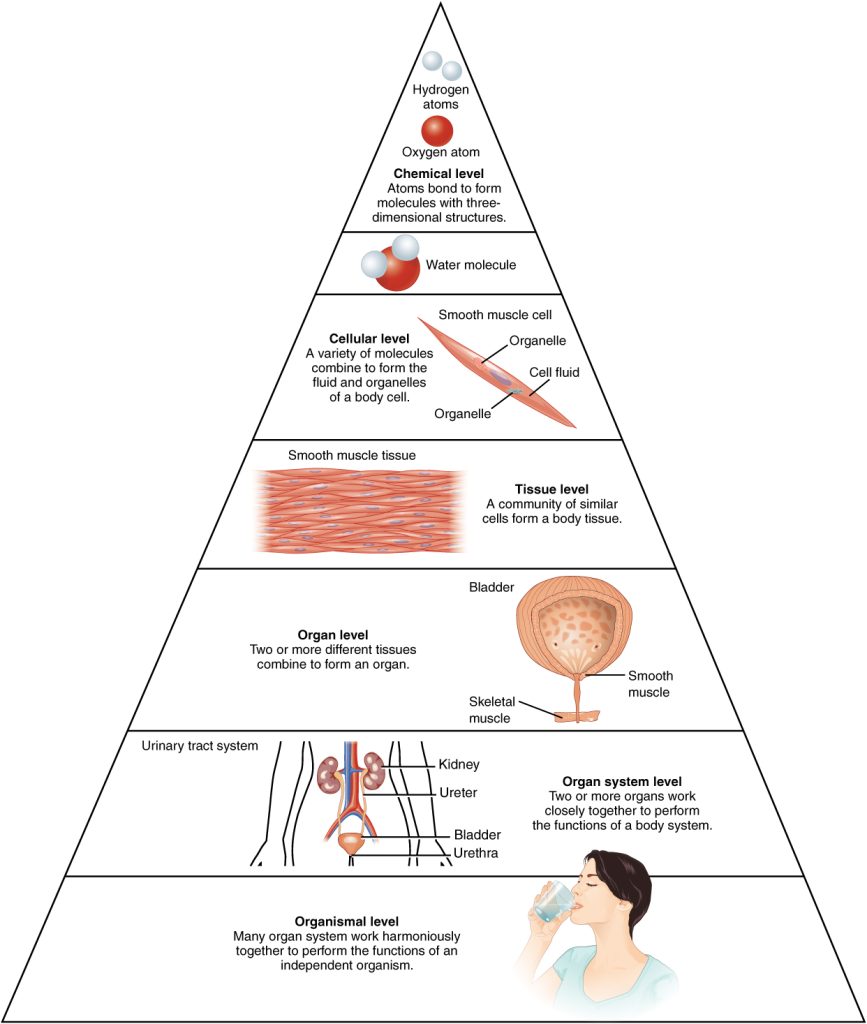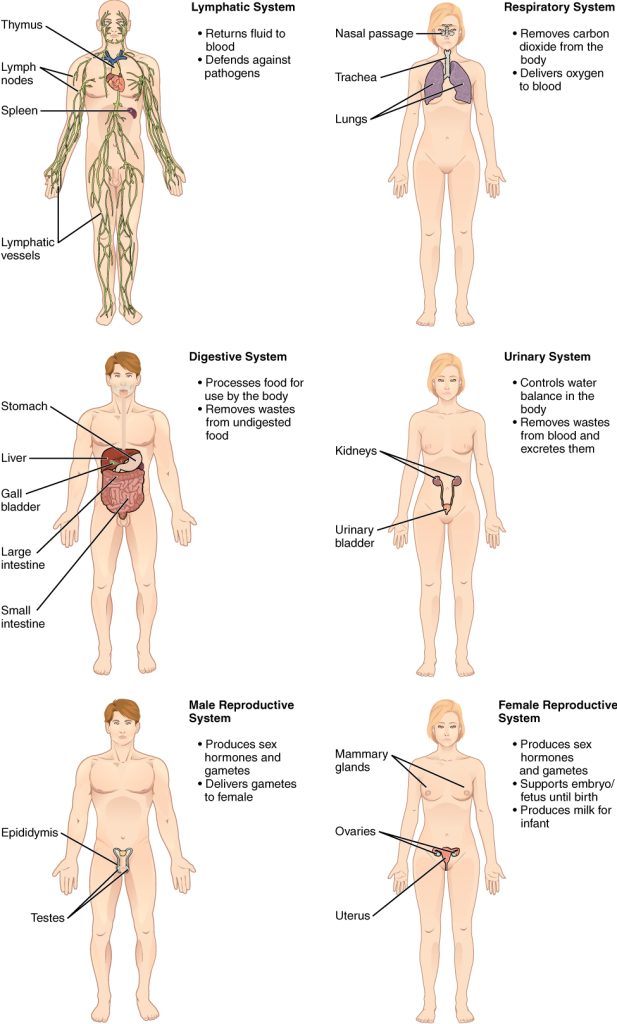Anatomy focuses on structure, and physiology focuses on function. Much of the study of physiology centers on the body’s tendency to maintain homeostasis. Homeostasis (hō-mē-ō-STĀ-sĭs) refers to the body’s biological processes that result in stable equilibrium.
Levels of Organization
The body has fundamental levels of organization that increase in complexity from chemical (atoms and molecules) to cells, tissues, organs, organ systems, to the organismal level. See Figure 2.1[1] for an illustration of these levels of organization.

The smallest unit of matter is an atom. Atoms are made up of subatomic particles, including protons, electrons, and neutrons. Two or more atoms combine to form a molecule, such as the water molecules, proteins, and sugars found in living things. Molecules are the chemical building blocks of all body structures.
A cell is the smallest independently functioning unit of a living organism. Even bacteria, which are extremely small, independently living organisms, have a cellular structure. Each bacterium is a single cell. All living structures of the human body contain cells, and almost all functions of the human body are performed in cells or are initiated by cells.
A tissue is a group of similar cells that work together to perform a specific function. An organ is an anatomically distinct structure of the body composed of two or more tissue types. Each organ performs one or more specific physiological functions. A system is a group of organs that work together to perform major functions or meet the physiological needs of the body.
The organism level is the highest level of organization. An organism is a living being that has a cellular structure and that can independently perform all physiologic functions necessary for life. In multicellular organisms, including humans, all cells, tissues, organs, and organ systems work together to maintain the life and health of the organism.
Organ Systems
There are eleven distinct organ systems in the human body. See Figure 2.2[2] illustrations of organ systems, including the integumentary, skeletal, muscular, nervous, endocrine, cardiovascular, lymphatic, respiratory, digestive, urinary, and male and female reproductive systems.

The next section in the chapter will review the common body systems and medical specialists. The subsequent chapters of this book will discuss medical terms by individual organ system.
View a supplementary YouTube video[3] for an introduction to anatomy and physiology:
Introduction to Anatomy & Physiology: Crash Course Anatomy & Physiology #1
- “101_Levels_of_Org_in_Body.jpg” by OpenStax is licensed under CC BY 4.0. Access for free at https://openstax.org/books/anatomy-and-physiology-2e/pages/1-introduction ↵
- “Organ_Systems_II.jpg” by OpenStax is licensed under CC BY 4.0. Access for free at https://openstax.org/books/anatomy-and-physiology-2e/pages/1-introduction ↵
- CrashCourse. (2015, January 6). Introduction to anatomy & physiology: Crash course A&P #1 [Video]. YouTube. https://youtu.be/uBGl2BujkPQ ↵

